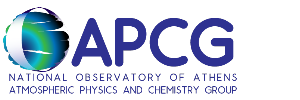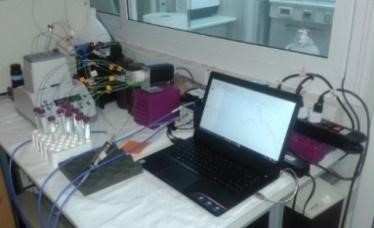Atmospheric aerosols exert a net cooling impact on climate that offsets part of the warming effect from greenhouse gas (GHG) emissions. Therefore, the reduction in aerosol emissions due to air pollution control measures in the coming decades is expected to result in a warming effect that will boost the warming induced by GHGs.
Multi-model mean surface air temperature response induced by aerosol changes (Foster et al., 2021)
Aerosols show a larger geographical variation in their radiative forcing compared to CO2 due to their short lifetime of the order of a few days, resulting in inhomogeneous forcing on regional climate, contrary to the relatively homogeneous spatial influence of CO2 and other WMGHGs (well-mixed greenhouse gases) on climate (Shindell et al., 2015). However, the effects of aerosol changes on regional and local climate are sensitive to several model uncertainties concerning parameterizations of processes, such as wet and dry removal, aerosol-cloud interactions, and particulate chemistry, in addition to those of aerosol-radiation and aerosol-photolysis interactions. Such uncertainties are likely to be confounded even further by the variability among models in the underlying regional climate and circulation patterns, leading to greater intermodel spread at regional scales than at a global scale (Zanis et al., 2020). Furthermore, estimates of radiative forcing from aerosols are very sensitive to poorly constrained emission estimates for preindustrial time, especially from wildfires and bioaerosols (IPCC, 2021). Consequently, it is crucial to accurately quantify the extent to which aerosols currently offset greenhouse gas warming due to anthropogenic/natural emissions (Schwartz, 2018).
RESEARCH OBJECTIVES:
To tackle the above challenges, we need to increase the reliability of aerosol parameterizations and the accuracy of estimates of the aerosol effects on climate. In the framework of REINFORCE, leading climate scientists from five Greek academic and research organizations will join forces to efficiently parameterize the most critical processes driving the aerosol atmospheric cycles and their impact on climate in a state-of-the-art European ESM.
REINFORCE will pursue the following main objectives:
- Make targeted improvements to atmospheric aerosol's primary and secondary sources’ parameterizations and evaluate the model's ability to simulate them.
- Apply targeted improvements to the corresponding simulation of aerosol/climate interactions to obtain more reliable climate predictions.
- Thoroughly investigate the climate impacts of aerosols on global and regional scales.
REINFORCE is structured around seven work packages (WPs), between which exist key synergies
THE MODELLING TOOL:
The well-documented European ESM EC-Earth 3, which contributes to the Aerosols and Chemistry Model Intercomparison Project (AerChemMIP), will be extended with state-of-the-art organic aerosol schemes to account for their secondary formation based on sophisticated parameterizations, their emissions from wildfires, and biological processes (bioaerosols).
The atmospheric General Circulation Model (GCM) of EC-Earth is based on cycle 36r4 of the Integrated Forecast System (IFS) from the European Center for Medium-Range Weather Forecasts (ECMWF), which includes the land surface model H-TESSEL, and the ocean model is NEMO 3.6, which includes the Louvain-la-Neuve sea ice model (LIM) for sea ice processes. Data exchange and interpolation between modules are handled through the Ocean Atmosphere Sea Ice Soil version 3 (OASIS3) coupler. The Tracer Model version 5 release 3.0 (TM5-MP 3.0) represents the atmospheric chemistry and transport of aerosols and reactive species in EC-Earth, and for this project, the EC-Earth3-AerChem model branch (van Noije et al., 2021) will be used.
CONTACT INFORMATION:
Senior Researcher
Atmospheric Physics and Chemistry Group, Institute for Environmental Research and Sustainable Development
National Observatory of Athens
This email address is being protected from spambots. You need JavaScript enabled to view it.










